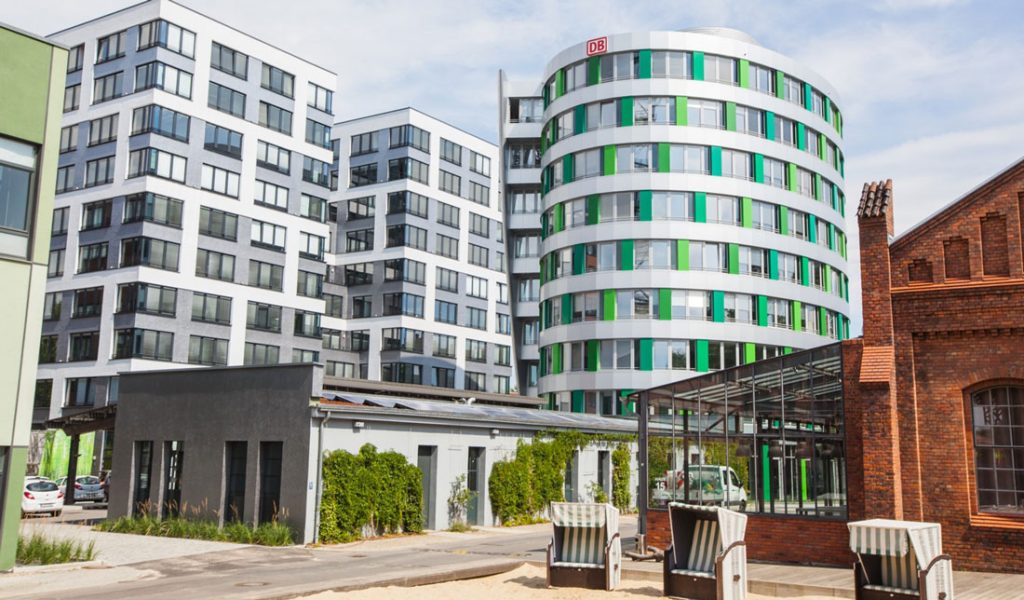With a global population trajectory of 10 billion by 2050, it’s critical that we find ways to make buildings even more energy efficient. Bertrand Lack of Schneider Electric shares how BIM technology helps designers contributes to this effort.

July 8th, 2019
With a global population trajectory of 10 billion by 2050, and the majority concentrated in urban areas, studies are estimating that 3.3 trillion USD of investment will be needed in infrastructure annually through 2030. Given that buildings currently account for 40 per cent of global energy consumption, a massive number of new buildings will have an equally massive impact on the environment.
In light of these predictions, it’s critical that we find ways to make buildings even more energy efficient than the greenest structures are today. Building Information Modeling (BIM) technology contributes to this effort by helping designers include energy modelling as part of the design workflow, as well as helping improve efficiency and reduce waste in all steps of construction.
Let’s take a closer look at what is still needed from all stakeholders – from equipment manufacturers to designers to owners – to make energy modelling even more accurate and repeatable, while also giving facility teams a dynamic tool for improving operational efficiency after a building is constructed.

BIM solutions provide a range of powerful tools to simulate the mechanical, electrical, and plumbing (MEP) performance of a building. However, Building Energy Modeling (BEM) is only offered by a few BIM providers as an integrated capability, while most BEM tools are only available as standalone applications.
BEM tools typically help assess energy demand, indoor environmental quality, carbon dioxide emission and payback periods of energy saving measures.
In doing so the BEM tool can help evaluate whether the building design will meet energy regulations or certifications, such as LEED, BREAM, etc. But it has the potential to go beyond the design stage by modelling control of the building in actual operation.
Today, most energy modelling occurs when a building design is nearing completion using a separate energy model. However, if the BEM tool is integrated within the BIM application and workflow, this energy analysis can occur as early as the concept stage, allowing for more informed design decisions.

Energy modelling tools use a range of parameters to estimate the energy performance of a building. Some of this information – e.g. building envelope, zones, rooms, structure, equipment, control scenarios – can often come directly from the BIM system. However, for comprehensive energy modelling, a more detailed level of information on energy characteristics is needed.
A BIM model is made up of various categories of ‘objects’, which include each piece of equipment in the building. Objects can include different levels of detail, often provided by the equipment manufacturer, which needs to be in a format the specific BIM system can understand.
For effective energy modelling, the designer needs to include the right amount of information about each piece of equipment, including at the very least: power consumption, or heating and cooling capacity (for HVAC equipment).
The challenge is that there has been no established global standard for defining energy-related properties, though some work has already been underway by separate organisations in some countries, such as France, Germany, and Australia.
Further complicating things is the fact that BIM design typically uses multiple tools, each with a different focus, from the BIM tool used for the building model, to tools used for structural and MEP models, to the separate BEM tool for energy modelling. This requires data to be transferred between the BIM and BEM models, which is more difficult when the tools are not integrated.
Standards exist that enable the extraction and sharing of data between BIM and BEM tools. However, these require a middleware conversion utility, and there is room for potential errors along the way.
Finally, the energy modelling offered by most BEM tools today only takes into account ‘passive’ elements, whereas true energy efficiency estimation must also take into account active control scenarios and real energy usage data. This is not currently a common capability of BIM.
For its recently completed Technopole building in Grenoble, Schneider Electric partnered with Autodesk to use its Revit BIM platform as ‘the operating tools for tomorrow’s building.’ Beyond helping coordinating construction, the process helped the building achieve LEED Platinum certification.
It is also intended to reproduce real energy behaviour, with the BIM system eventually being connected to the operating data of the building. As such, the model will help execute augmented virtual tours, manage spaces, perform scheduling in connection with the Building Management System (BMS), monitor and manage energy, and perform predictive maintenance.

In summary, today’s BIM solutions are helping the AEC industry and building owners move toward increasingly efficient building designs.
However, to inform better decisions for subsequent designs, greater levels of energy-relevant specifications are needed from equipment manufacturers, and a better bridge is needed between BIM and actual energy performance once a building is in operation.
These challenges can be overcome, but require the active participation of all stakeholders. For more information on this topic, download the white paper “Bridging BIM and BEM: the path forward to more efficient building design and operations”.
A searchable and comprehensive guide for specifying leading products and their suppliers
Keep up to date with the latest and greatest from our industry BFF's!

Sub-Zero and Wolf’s prestigious Kitchen Design Contest (KDC) has celebrated the very best in kitchen innovation and aesthetics for three decades now. Recognising premier kitchen design professionals from around the globe, the KDC facilitates innovation, style and functionality that pushes boundaries.

Savage Design’s approach to understanding the relationship between design concepts and user experience, particularly with metalwork, transcends traditional boundaries, blending timeless craftsmanship with digital innovation to create enduring elegance in objects, furnishings, and door furniture.
The internet never sleeps! Here's the stuff you might have missed

We spoke to Plus Architecture’s Chrisney Formosa about a string of recent Brisbane projects and what they might tell us about the city’s design evolution.

Found within the verdant landscape of Jubilee Hills, Hyderabad, Sona Reddy’s design for this authentic Andhra restaurant adeptly fuses textural rhythms with traditional materials.